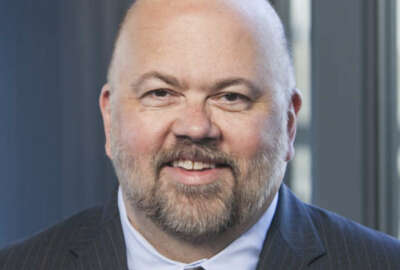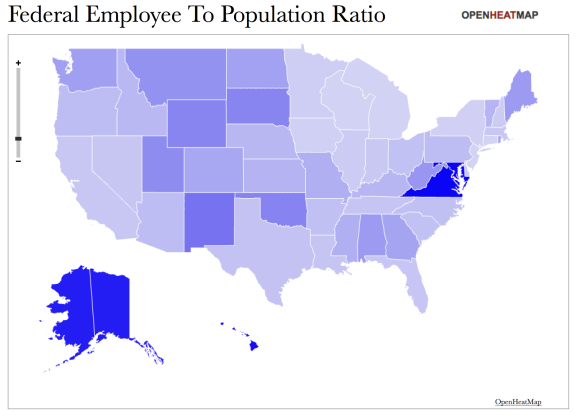

The truth is federal employees are in every state, The abstract concept of cutting the federal workforce runs into the reality that federal employees are...
This column was originally published on Jeff Neal’s blog, ChiefHRO.com, and was republished here with permission from the author.
A recent report by Government Executive pointed out that some agency reorganization plans do not include the widespread employee cuts that some people had expected. They pointed out that members of Congress did not appear to be upset by that. Why is that? We generally think of conservatives being in favor of smaller government, and therefore wanting to reduce the number of federal workers. Progressives tend to be in favor of more government programs and the larger federal workforce that accompanies those programs.
So why would we not expect to see members of Congress complaining about not seeing more cuts to the workforce? There is one reason that stands out, and that is where federal employees are located. This map shows the percentage of non-postal federal workers relative to state population. Click here for an interactive version. 
States with a larger ratio of federal workers to population are shown in darker colors, while those with fewer feds are in lighter colors. When you look at the map, you can see a couple of things. The first is obvious. There is a large concentration of federal employees in the District of Columbia, Maryland and Virginia. In Maryland, for example, the number of federal jobs equals 2.17 percent of the population. It is in the national capital region, so that is to be expected. What may be more surprising is the ratio in middle America, Alaska and Hawaii. In Alaska, the number is 1.48 percent. Other states with high ratios of federal jobs/population are Hawaii (1.55 percent), New Mexico (1.05 percent), Oklahoma (0.97 percent), South Dakota (0.96 percent) and other states in the center of the country.
The truth is that federal employees are in every state. The abstract concept of cutting the federal workforce runs into the reality that federal employees are constituents and most members of Congress are interested in protecting jobs in their districts. The late House Speaker Tip O’Neill used to say “All politics is local.” This is a great example of that. It is also a good example of the reason that members of Congress are not enthusiastic about the Department of Defense request to have one or more new rounds of base closures. Many of those jobs outside the national capital region are in the Department of Defense. In Alaska, for example, 4,900 of the 10,800 federal jobs are in DoD (mostly Army and Air Force).
That is a bit of good news for the federal workforce. The loss of local jobs means something to many members of Congress and they will not necessarily jump at the chance to cut them. The same applies to some agency heads. Agriculture Secretary Sonny Perdue (former Governor of Georgia) told his workforce that his restructuring plans did not include big cuts to the workforce. Agriculture has employees in more locations than any agency other than the Postal Service.
It is likely that some agencies will go through with plans to reduce the workforce, but there is still reason for many federal employees to have hope that their agencies will not see wholesale cuts to the workforce.
Copyright © 2025 Federal News Network. All rights reserved. This website is not intended for users located within the European Economic Area.



